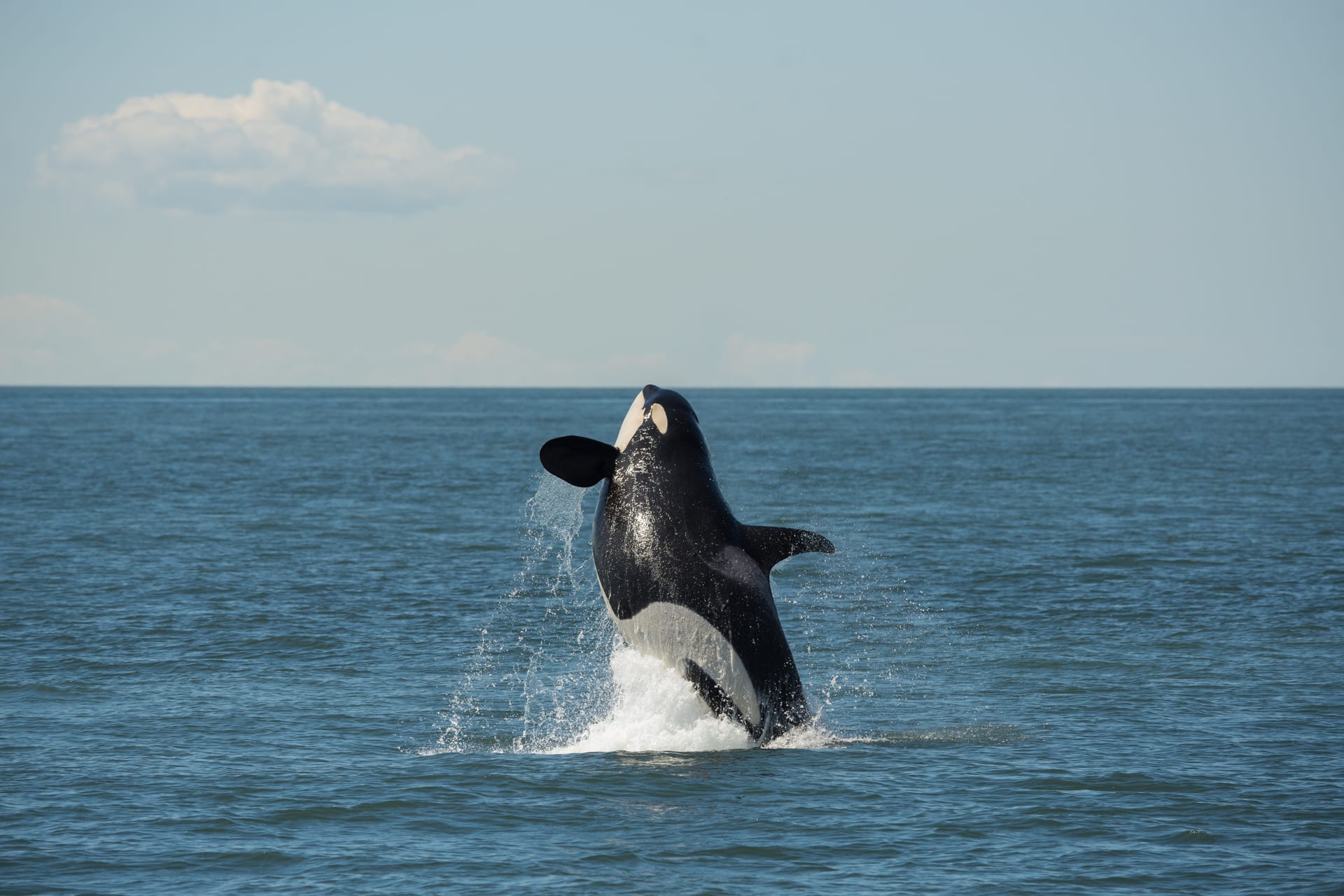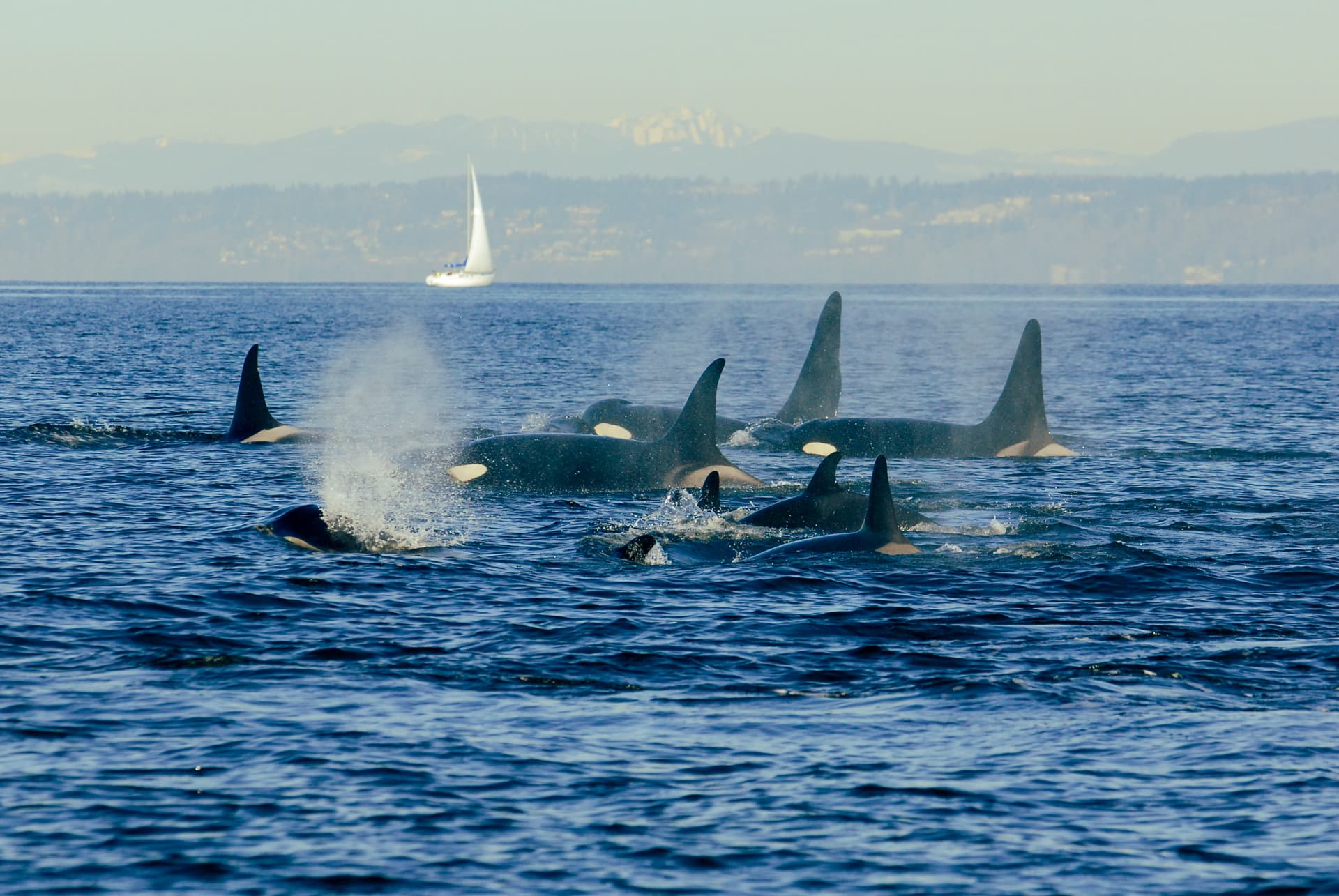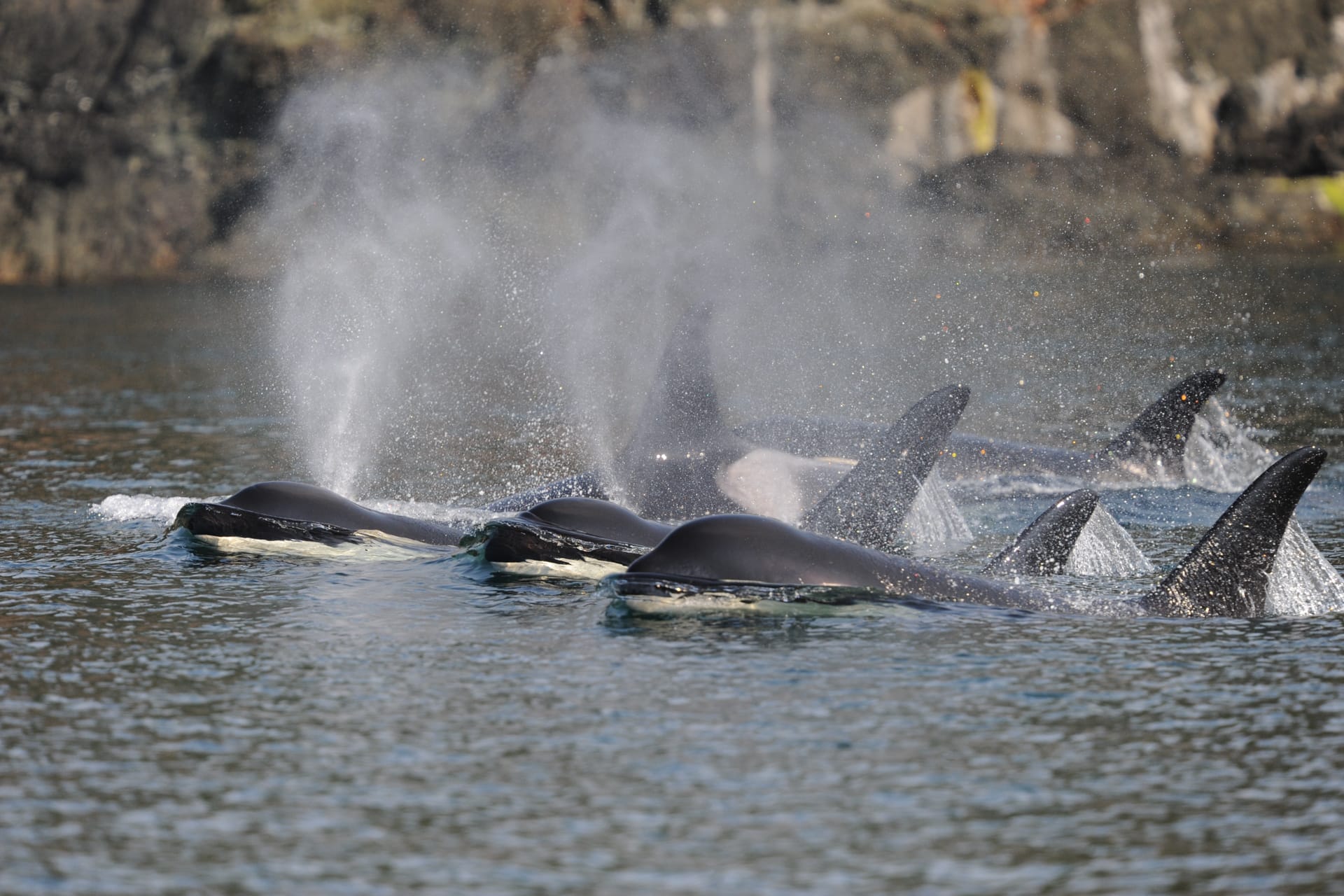
L94 Calypso, at age 28, is already mom to two calves, L113 Cousteau and L121 Windsong, whereas L119 Joy is a first-time mom at age 12. In recent years, these births in L pod often come as a surprise, as they now visit the Salish Sea infrequently, instead spending more of their time hunting in outer coastal waters. Their increasing absence hampers our efforts to track their health through our non-invasive fecal sample collection. We aim to find pregnancies early to inform management agencies to take the necessary actions to protect these vulnerable females.
While news of these births is encouraging, we must not lose sight of the fact that a healthy population of killer whales should have six to seven new calves every year. Yet, since 2020, there have been only seven documented births, including these recent arrivals. While such a low birth rate persists, we will continue to have concerns over the population’s extinction risk, particularly with the increasing number of premature adult deaths.

L126 swims alongside mother, L119, on July 2, 2023.
The immediate solution is to improve their health by providing them with more opportunities to catch adult wild Chinook salmon. Therefore it is a hammer blow to learn that the Southeast Alaska Chinook salmon fishery—where 97% of the fish caught are not from Alaska’s rivers—will go ahead this summer, despite the judge’s finding that this fishery jeopardizes the future of these predators and their prey. Instead, an appeal by NOAA Fisheries has delayed the remedy determined by the federal district court, which was to close the fishery this season.
In fact, the most appropriate remedy would be for the federal government to compensate the fishery for the loss of income, thus allowing more Chinook salmon to return to their home rivers to spawn in British Columbia, Washington, and Oregon. This would have provided additional foraging opportunities for the Southern Resident killer whales while seeding the future of these endangered Chinook salmon populations.
Increasing the number of hatchery-raised fish is not the answer. Despite millions released over the last few decades, the health of the Southern Resident killer whales has consistently declined, along with the catch. No one benefits from these failed policies, yet they persist. In spite of the odds, wild Chinook salmon and the Southern Resident killer whales have also persisted despite this managed decline.
The status quo cannot continue, especially with the pressures of climate change on Pacific salmon and increasing threats from environmental pollutants throughout the marine food web.
You can help by taking action, calling your local and state representatives, and donating to help us monitor the health of these endangered orcas so we can continue to sound the alarm. We are in a five-alarm emergency now, and help simply cannot come soon enough.





